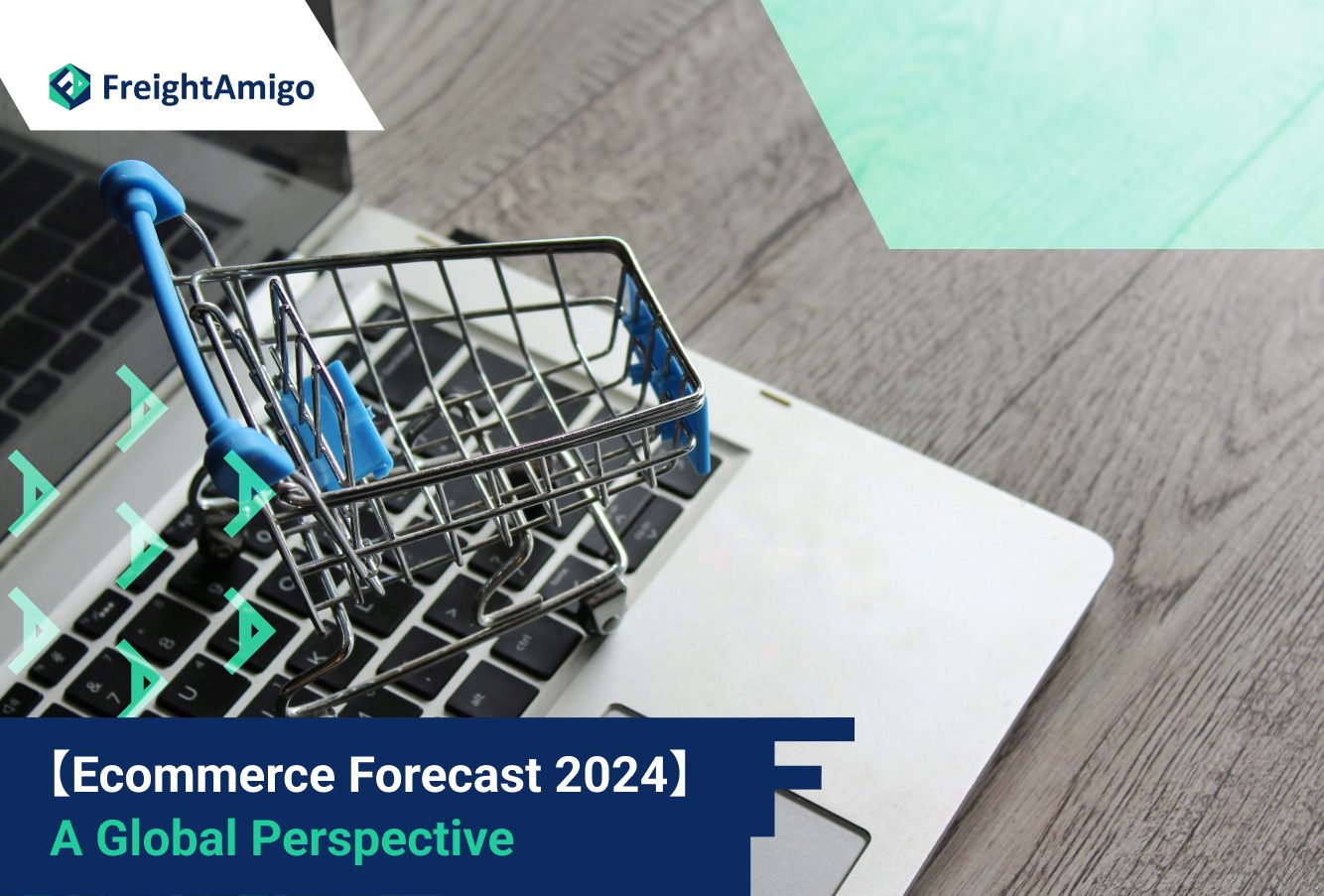【Ecommerce Forecast 2025】 A Global Perspective
February 18th, 2025: Maya Wong – Marketing Analyst at FreightAmigo
As Technology Rapidly Advances and Consumer Behavior Shifts. The global e-commerce market is undergoing unprecedented changes. Looking ahead to 2025, we expect e-commerce to continue its vigorous development, bringing more opportunities and challenges for businesses and consumers. In this fast-changing environment, logistics and supply chain management will play an increasingly important role. Let’s explore the future of global e-commerce in 2025 and how to prepare for this opportunity-filled future.
Want To Compare The Best Express, Air Freight, Sea Freight, Rail Freight & Trucking Rates So As To Have Better Control On Cost?
Major Trends in Global E-commerce for 2025
- Continued Growth of Cross-Border E-commerce By 2025, cross-border e-commerce is expected to become one of the main drivers of global e-commerce growth. With advances in logistics technology and optimized trade policies, consumers will have easier access to products from around the world. This trend will provide huge opportunities for businesses to explore new markets, while also posing higher demands on supply chain management.
- Dominance of Mobile Commerce The popularity of smartphones and mobile applications will further drive the development of mobile commerce. By 2025, the majority of e-commerce transactions are expected to be completed via mobile devices. This means businesses need to optimize their mobile shopping experience, ensuring their websites and applications are responsive and user-friendly.
- Widespread Application of Artificial Intelligence and Big Data Artificial Intelligence (AI) and big data analytics will play an increasingly important role in e-commerce. From personalized recommendations to inventory management, AI will help businesses improve operational efficiency and enhance customer experience. At the same time, big data analytics will provide valuable market insights, helping businesses develop more precise marketing strategies.
- Sustainable Development and Green Logistics With the rising environmental awareness among consumers, sustainable development will become an important issue in e-commerce. By 2025, we expect to see more businesses adopting eco-friendly packaging, optimizing delivery routes to reduce carbon emissions, and promoting circular economy models.
Challenges E-commerce Faces in 2025
- Complexity of Logistics and Supply Chain With the growth of cross-border e-commerce, logistics and supply chain management will become increasingly complex. Businesses need to navigate various countries’ regulations, tariff policies, and improve delivery efficiency and accuracy. This will require more advanced logistics solutions and technical support.
- Data Security and Privacy Protection As the volume of e-commerce transactions increases, data security and consumer privacy protection will become paramount. Businesses need to invest in robust cybersecurity systems and ensure compliance with data protection regulations in different countries.
- Intensified Competition With lower entry barriers, the competition in the e-commerce market will become more intense. Businesses need to continuously innovate and offer unique value propositions to stand out from the competition.
How FreightAmigo Helps Businesses Meet E-commerce Challenges in 2025
Facing the opportunities and challenges of global e-commerce in 2025, FreightAmigo, as a one-stop digital supply chain financial platform, offers comprehensive solutions for businesses:
- Optimization of Cross-Border Logistics: Our platform integrates international courier, air freight, sea freight, rail transport, and trucking solutions to help businesses easily compare door-to-door freight quotes and book online, thus optimizing cross-border logistics processes.
- Real-Time Cargo Tracking: By connecting with over 1,000 renowned airlines and shipping companies, we provide customers with round-the-clock cargo status tracking services, enhancing supply chain transparency and predictability.
- One-Stop Services: From customs clearance and cargo insurance to trade financing, FreightAmigo offers one-stop services to help businesses simplify the complex processes of cross-border e-commerce.
- Document Automation: Our system can automate the processing of freight documents, reducing human error and increasing efficiency.
- Professional Support: Our team of logistics experts provides 24/7 support to customers, helping to resolve various challenges encountered in global e-commerce operations.
By leveraging FreightAmigo’s advanced technology and comprehensive services, businesses can better address the challenges of the global e-commerce market in 2025, seize growth opportunities, and achieve sustainable development.
Conclusion
The Global E-commerce Market in 2025 is Filled with Opportunities and ChallengesThe growth of cross-border e-commerce, the prevalence of mobile commerce, the application of artificial intelligence, and the demand for sustainable development will all profoundly impact the future development of e-commerce. In the face of these trends, businesses need to respond flexibly, continuously innovate, and seek reliable partners to optimize their supply chain and logistics management.
As an industry pioneer, FreightAmigo is dedicated to helping businesses and individuals redefine their logistics experience. We believe that by combining artificial intelligence, big data, FreightTech, FinTech, InsurTech, and GreenTech, we can create a seamless, efficient, and sustainable e-commerce ecosystem for our customers. Let us work together to create a bright future for global e-commerce in 2025!
There Are Different Options For Cargo Transportation. If You Want To Choose The Most Convenient And Suitable Solution, It Is Best To Have The Full Support Of Logistics Experts! If You Are Planning To Ship Goods Overseas, Please Go To The FreightAmigo Page For Inquiries.
===
Read More:
【Anticipating the Future of Ecommerce】 Projections of 2025
【The Art of Order Fulfillment】 Strategies for Success in an E-commerce World
【Import and Export Insights for 2025】 Exploring New Opportunities in Emerging Markets
===
If you have any inquiries on logistics/supply chain, feel free to contact FreightAmigo now:
Phone : +852 28121686
WhatsApp: +852 27467829









































